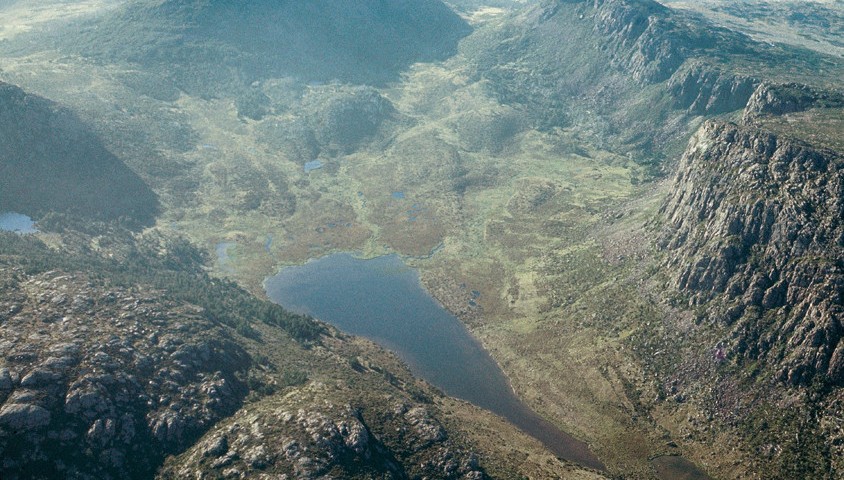Winter is the anchoring season. From it buds the spring, burns the summer and baulks the next reticent autumn. It is winter that we may most regret losing to global warming.
Already the glaciers and snows are turning to grey water and slush. Where icicles hung from the garden tap there is just a wet patch on the ground. The lace-patterned ice on the pond is missing. Skating has headed indoors. Skiing depends on machines for its snow. And pretty well all the plants on Earth need to migrate further from the equator if they are not to perish.
Speaking of which, the pencil pines unique to Tasmania have their stronghold on the lofty Central Plateau where the British settlers destroyed the Aboriginal people by the 1830s. The Tasmanian emu was shot out by the 1860s and the Tasmanian tiger lasted little longer.
By 1900 some 100,000 sheep and 40,000 cattle had caused havoc with sheet erosion of the plateau’s alpine soils and so, in turn, the invading human society collapsed.
In the 1960s a vast bushfire ravaged the plateau. The state government paid men from the lowlands one pound a day to fight the fire – and it just kept on breaking out. Those dead white spars in and around the Walls of Jerusalem are pencil pines burnt in this man-made disaster.
However, a nobly prescient head of the Tasmanian Lands Department in the 1970s then created the Central Plateau Conservation Area and included most of its higher northern parts. This led seamlessly to the inclusion of the higher plateau, including the Walls of Jerusalem, in the Tasmanian Wilderness World Heritage Area in 1989 when the Greens won the balance of power. Seamless except that this inclusion was hotly resisted by Premier Michael Field who was trumped by the remarkable federal minister for the environment, Graham Richardson.
It was in the midst of this political drama that, one sleepless moonlit night, I climbed the 1,000 metres to the plateau from my home at Liffey to revisit and be reaffirmed by the icy expanse of the prize at stake. There were wombats on the alpine meadow.
The next federal minister, Ros Kelly, agreed with her Tasmanian counterpart to allow shooting of the World Heritage wallabies provided a pup was present in the pack of bloodhounds as this would be an educative experience for the pup.
Whereas, in the winter of 1837, the Great Lake froze over and the blizzard was so severe that piles of the wallabies were left dead of the cold, they now face the heat of shotgun-toting hunters as well as that of global warming. And, like the pencil pines, the buff-coloured variety of these wallabies faces elimination because there is nowhere higher or cooler to go.
Sadly, I think the minus 15.3 degrees Celsius that my thermometer recorded on the plateau in 1982 is unlikely to be recorded there again and humanity – at least its nature lovers – faces many winters of our own self-made discontent.
This article was originally published in Wild 148. If you want to stay up to date with the best and latest content from Wild, subscribe here today.


